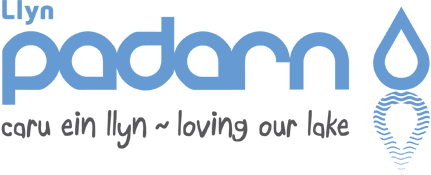
Helping Padarn’s Arctic Charr
This month as part of the collaborative efforts to halt the declining trend in the number of Arctic Charr (Torgoch) in Llyn Padarn, Environment Agency Wales (EAW) Sustainable Fishery Officers have been catching Arctic Charr from the lake. They have been harvesting the eggs and milt (seminal fluid) from the fish, as they move up onto their spawning beds in the Afon y Bala.

Pierino Algieri and Walter Hanks checking the fyke nets in Afon y Bala for Arctic charr.
The Charr are caught using non-destructive fyke nets located in the Afon y Bala. They are then quickly transferred to a lakeside laboratory where they are anaesthetised, weighed and measured, before the females are carefully stripped of their eggs and the milt is extracted from the males. Once the adult fish have come back round from the anaesthetic they’re returned to the lake unharmed.

Extracting eggs from a female charr.
The eggs and milt are mixed together to ensure fertilisation of the eggs. The fertilisation success rate can be as good as 100%; far higher than if nature had been left to take its course. The process is known as ‘dry stripping’, since every effort is made to ensure no water comes into contact with the eggs before fertilisation to maximise fertility. Each hen fish produces around 400 eggs.

Extracting the milt from a male charr.
The fertilised eggs are then taken to the Environment Agency Wales fish hatchery at Dolgellau hatchery. At the hatchery the eggs will be incubated for approximately three months before the young hatch out and are returned to Llyn Padarn around October time. This is the fourth year of the Arctic Charr rearing and stocking programme in the lake. The Environment Agency Wales have been monitoring the Torgoch in Llyn Padarn for nearly fifteen years. The reason for their decline in number isn’t clear but in eight of the ten lakes with a natural population of Arctic charr south of Scotland it has been a similar trend.

The eggs and milt are mixed together and left to stand for five minutes which is plenty time enough for fertilisation to take place.
An Environment Agency Wales spokesperson said: “We will continue our efforts to improve the numbers of Arctic Charr in Llyn Padarn. The rearing programme is part of the wider efforts to make the environment of Llyn Padarn better and we are doing this by working to better understand the lake and with our partner organisations Countryside Council for Wales, Gwynedd County Council, First Hydro and Dwr Cymru Welsh Water taking action to improve the water quality, habitat and Charr numbers in the lake.”


